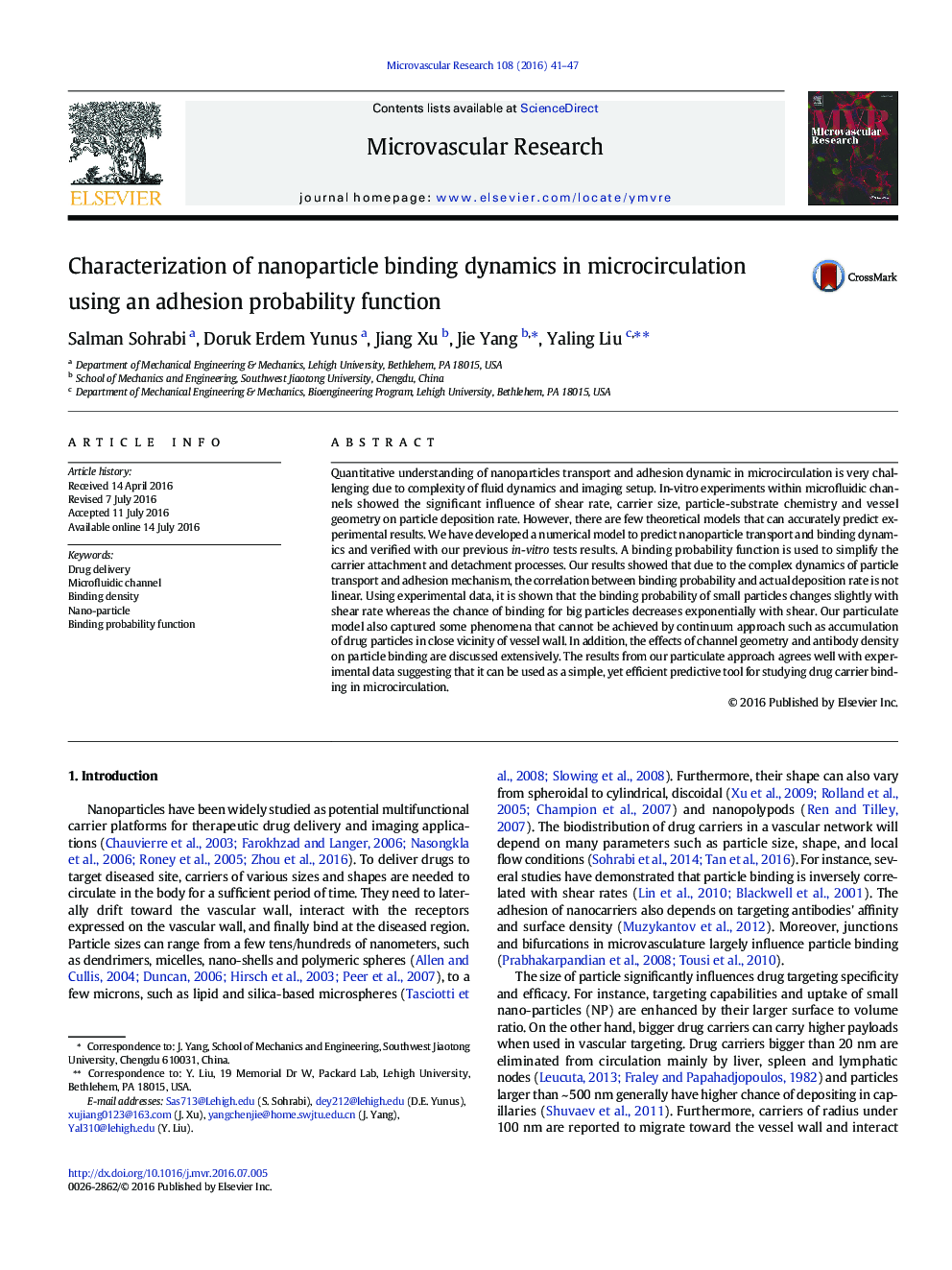| Article ID | Journal | Published Year | Pages | File Type |
|---|---|---|---|---|
| 1994655 | Microvascular Research | 2016 | 7 Pages |
Abstract
Quantitative understanding of nanoparticles transport and adhesion dynamic in microcirculation is very challenging due to complexity of fluid dynamics and imaging setup. In-vitro experiments within microfluidic channels showed the significant influence of shear rate, carrier size, particle-substrate chemistry and vessel geometry on particle deposition rate. However, there are few theoretical models that can accurately predict experimental results. We have developed a numerical model to predict nanoparticle transport and binding dynamics and verified with our previous in-vitro tests results. A binding probability function is used to simplify the carrier attachment and detachment processes. Our results showed that due to the complex dynamics of particle transport and adhesion mechanism, the correlation between binding probability and actual deposition rate is not linear. Using experimental data, it is shown that the binding probability of small particles changes slightly with shear rate whereas the chance of binding for big particles decreases exponentially with shear. Our particulate model also captured some phenomena that cannot be achieved by continuum approach such as accumulation of drug particles in close vicinity of vessel wall. In addition, the effects of channel geometry and antibody density on particle binding are discussed extensively. The results from our particulate approach agrees well with experimental data suggesting that it can be used as a simple, yet efficient predictive tool for studying drug carrier binding in microcirculation.
Related Topics
Life Sciences
Biochemistry, Genetics and Molecular Biology
Biochemistry
Authors
Salman Sohrabi, Doruk Erdem Yunus, Jiang Xu, Jie Yang, Yaling Liu,
